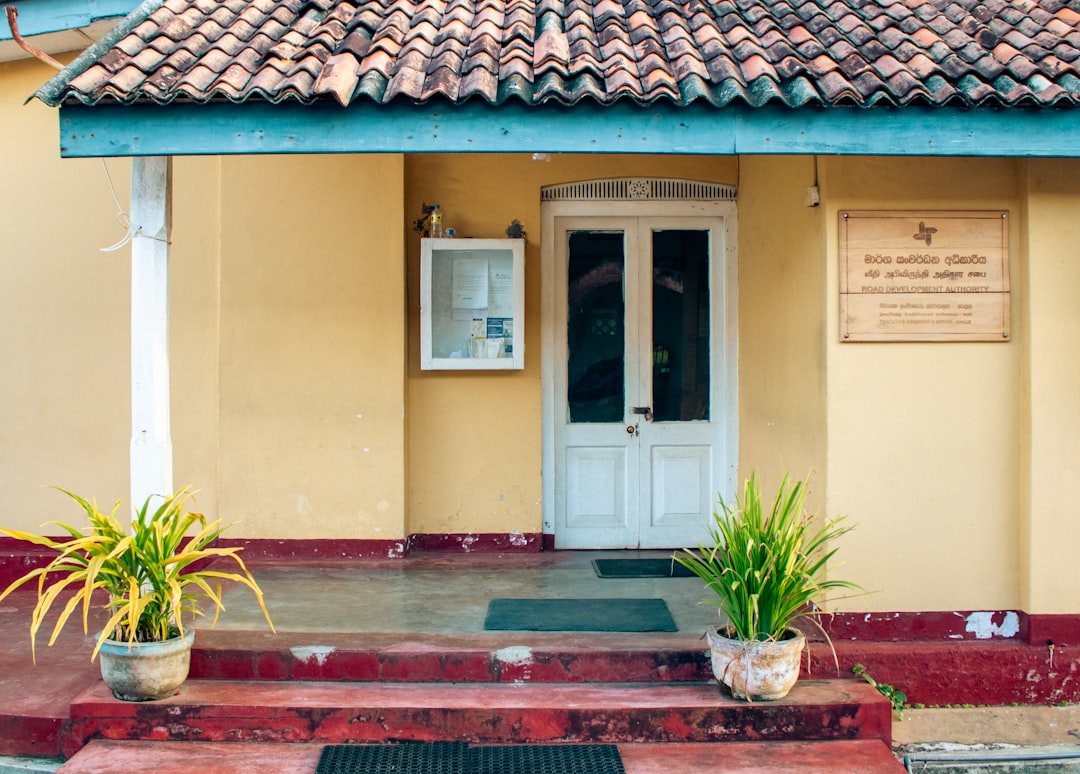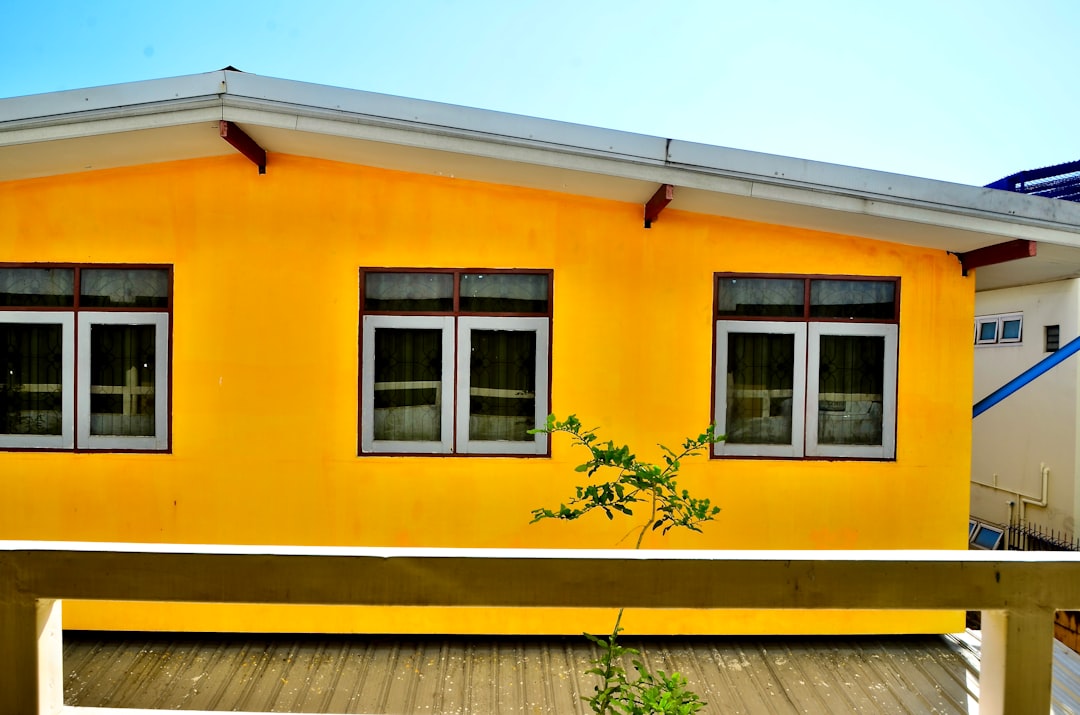

Engage prospects with a scan and streamline customer engagement with FREE QR code marketing tools by Sona – no strings attached!
Create a Free QR CodeFree consultation

No commitment

Engage prospects with a scan and streamline customer engagement with FREE QR code marketing tools by Sona – no strings attached!
Create a Free QR CodeFree consultation

No commitment
QR codes enable agencies to move beyond outdated, manual workflows such as printed forms, open house sign-in sheets, and static window posters, which often result in missing high-value prospects that never get entered into the CRM. In a typical weekend, dozens of renters might view a property flyer or a for-rent sign, but only a fraction call or email. Without a fast, low-friction digital bridge, those moments of intent evaporate. QR codes turn every physical impression into an immediate, measurable action that flows directly into your leasing funnel.
By embedding QR codes on property flyers, signage, and direct mail, agencies can automatically funnel every scan into a trackable digital journey. The result is real-time identification of both visible and previously anonymous prospects, faster follow-up, and a clear line of sight from an offline interaction to an online conversion. The following best practices will help you design QR campaigns that increase tour bookings, accelerate applications, and lift overall conversion rates across your portfolio.
Advanced platforms such as Sona QR streamline deployment, tracking, and CRM integration, ensuring every scan is not just captured, but also attributed, scored, and routed for timely outreach. With the right tooling, agencies replace guesswork with data-driven workflows that shorten sales cycles and increase occupancy.

For home rental agencies, converting fleeting offline interest such as a passerby hesitating in front of a property ad into high-intent digital leads is a persistent challenge. Paper brochures and static signage inform, but they rarely capture identity or intent. Even when prospects are interested, the delay between noticing a listing and taking action leads to lost momentum and slow follow-ups. QR codes close this gap by compressing the journey from curiosity to commitment into a single scan that routes renters to virtual tours, open slots, application forms, or chat support. See Forbes analysis for examples.
Dynamic QR codes go further by enabling edits after printing, unique tracking by placement, and granular analytics that reveal which neighborhoods, properties, or creative variants drive the best results. This flexibility makes campaigns resilient to inventory changes and seasonality. For example, when a unit is leased, the same printed code can switch to a similar unit or a waitlist page without reprinting materials. Meanwhile, the analytics show which placements pull the highest-intent traffic, informing where to invest and where to refine.
By integrating QR codes across the renter journey, agencies move beyond static marketing toward an adaptive system that learns from real behavior and continuously improves conversion.

Most agencies struggle with incomplete or generic data from traditional lead forms, which makes tailoring the renter experience difficult. QR codes support multiple formats that map neatly to leasing workflows, giving prospects the fastest route to what they need and giving teams stronger signals for segmentation and prioritization. The key is to pick formats that reflect the intent of each touchpoint and the environment where scanning occurs.
Static codes are appropriate for evergreen assets such as an office window card pointing to the property homepage. Dynamic codes are better for anything campaign-based or inventory-sensitive, since the destination can change without reprinting while analytics stay intact. Below are formats that consistently perform in home rental environments.
Dynamic QR codes pair especially well with forms and web links because they centralize control and analytics. With a platform such as Sona QR, you can manage all code types, update destinations, and sync scan data to your CRM and ad platforms for remarketing.

Even well-promoted properties can underperform if agencies cannot measure which offline placements drive high-fit traffic. QR codes unlock attribution and optimization in the physical world by converting impressions into measurable interactions. Start where you already have attention, then scale to new surfaces that routinely touch likely renters.
Focus on media that naturally aligns with renter behavior. Yard signs and window displays capture passersby near the property. Direct mail and door hangers activate neighbors who know the area. Transit and out-of-home placements introduce the property to commuters who frequent the neighborhood. Each channel has unique context that informs messaging, calls to action, and landing pages.
The insights from these placements reveal which audiences are leaning in, when they are most active, and what offer resonates. Use this to reallocate budget, refine creative, and prioritize follow-up.

QR codes excel when the next step is clear and valuable. In leasing, that means booking tours, starting applications, getting answers, and collecting feedback quickly. Deploy a small set of high-impact use cases first, then expand as you prove ROI across properties and asset types.
Align each use case with the likely environment and renter mindset. For example, a window display attracts curious passersby who want to see inside quickly. A brochure in a coffee shop might perform better if it highlights lifestyle perks and a low-commitment tour signup. In every instance, the QR experience should feel like an elevated service, not a gimmick. Link open houses to fast check-ins, and use flyers for quick awareness-to-tour flows.
Each use case should be instrumented with analytics and tied to a follow-up sequence. By connecting scans to behavior-based workflows, agencies can accelerate decisions and reduce drop-off.
Traditional website tracking alone cannot reveal which offline interactions indicate strong intent. Scans, however, embed context such as location, time, and asset that clarify what a prospect wants right now. By deploying unique QR codes at different journey stages, you automatically segment audiences and feed precise signals into your CRM and ad platforms.
Segmentation allows you to tailor messages and offers. A prospect who scanned an open house invite should receive reminders and day-of logistics. Someone who scanned an application link but did not finish might get a friendly nudge, a list of required documents, or an option to book a call. Over time, these segments become a durable audience graph you can use for retargeting and lookalike modeling. For deeper signal strategy, see Sona’s intent data guide.
Advanced platforms like Sona QR can even resolve some anonymous activity to known profiles through consented enrichment, enabling more accurate attribution and pipeline forecasting without intrusive forms.
Fragmented marketing creates blind spots and inconsistent renter experiences. QR codes unify your channels by ensuring every offline interaction flows into a measurable and actionable digital path. When you standardize QR usage across assets, you gain comparable data across placements and properties, making it easier to reallocate budget and scale winners. For vertical tactics, explore Sona QR’s real estate industry guide.
Design QR placements to complement each channel’s strengths. A social post featuring a printable, shareable flyer can include a code that routes to a pre-filled tour booking form. A direct mail piece can emphasize neighborhood perks and point to a dynamic availability page. The more cohesive the path, the better the results. For campaign inspiration, see real estate QR ideas.
With Sona QR as a centralized hub, marketing and leasing teams can create, manage, and analyze codes across all channels, then sync scan signals to the CRM for coordinated follow-up and lead scoring.
A structured approach prevents fragmented data and ensures every scan contributes to revenue. Use this checklist to plan, launch, and scale consistently across properties and markets.
Start with a clear business problem and a single, high-value action. Identify where you are losing prospects or data today, such as walk-by interest that never turns into a booking or open house check-ins that get mis-entered. Tie the QR experience directly to a measurable outcome like increasing tour bookings or reducing time to application.
Select static codes for fixed, evergreen destinations such as a corporate leasing page. Choose dynamic codes when you need tracking, retargeting, or the ability to change destinations without reprinting. For most campaign scenarios in rentals, dynamic is the safer and more scalable option.
Branded, high-contrast QR designs with a clear headline and subtext improve scan rates. Size and placement matter. Codes on yard signs should be large, with sufficient white space and a contrasting background. Always test across devices, distances, and lighting conditions before going live.
Launch where you already have offline attention, then expand to new surfaces. Use unique codes by placement and property so you can attribute results accurately and automate personalized follow-up sequences by source.
Measure scan volume, scan-to-action rates, and downstream lease conversion. Diagnose gaps such as high scans but low bookings, which could indicate a landing page or scheduling bottleneck. Iterate messaging, design, and placement to improve performance.
An initial pilot across two or three properties helps you set benchmarks, prove ROI, and build internal momentum. Once the model is working, templatize creative, CTAs, and automations so you can replicate quickly across your portfolio.
Without robust analytics, agencies risk flying blind, unable to attribute leases to specific campaigns or recognize early signals of buyer intent. QR-based tracking captures detailed, actionable data with every scan: time, location, device, and the specific asset that drove engagement. This transforms window shoppers into attributed leads and makes optimization practical rather than speculative.
Direct CRM integration ensures every journey is logged, from first scan through tour booking, application, and lease. By tracking both micro-conversions such as viewing a floor plan and macro-conversions such as submitting an application, teams can prioritize follow-up with prospects who show strong intent signals and diagnose friction points that suppress conversion.
With these insights, agencies can forecast demand more accurately, tailor staffing to peak times, and align marketing and leasing around the placements that consistently produce leases.
Scaling QR impact is about consistency, clarity, and automation. The more you standardize code creation, CTA structure, landing page templates, and follow-up flows, the easier it becomes to test variations and replicate winners across your portfolio. Aim for quick wins first, then layer in sophistication such as identity resolution and retargeting.
Education matters. Train staff to reference QR-enabled experiences in conversations and emails so prospects know what to expect. Encourage agents to carry QR-enabled business cards that link directly to their calendars or property shortlists, and use welcome kits with maintenance and amenity codes to support residents after move-in.
You can generate and track your first QR codes in minutes with Sona QR, then connect scan activity to your CRM to orchestrate timely and relevant engagement at scale. Start creating QR codes for free.

Case studies from the field show how small changes in QR placement and messaging can produce outsized gains. Agencies that start with a clear objective and a narrow set of use cases tend to ramp quickly because they prove value, document the playbook, and then scale to additional properties and channels with confidence.
The best examples demonstrate how QR codes transform passive interest into immediate action. They also show how data from the physical world can inform smarter budgeting and creative choices in future campaigns.
These creative applications illustrate the power of meeting renters where they are, then guiding them along a clear, data-backed journey toward lease decisions.
Success with QR codes is determined by the clarity of your offer, the quality of your landing experience, and the speed of your response. Make each scan feel like a concierge moment that saves time and adds value. Keep the path between scan and payoff as short as possible, and remove all unnecessary steps.
Common pitfalls include codes that are too small or placed too high to scan comfortably, generic calls to action that do not communicate a benefit, and slow loading pages that frustrate users. Another frequent mistake is deploying codes without a tracking and follow-up plan, which leads to fragmented data and missed opportunities.
Industry practitioners also recommend standardizing creative templates and A/B testing CTAs by neighborhood or property type. Use performance data to iterate weekly during lease-up periods and to retire underperforming placements quickly.
In a market where missed opportunities and invisible buyer journeys can cap growth, QR codes offer a practical, scalable bridge between physical marketing and measurable digital engagement. Every surface can become a gateway to a next step, whether that is a virtual tour, a real-time calendar, or a fast-track application. Agencies benefit from deeper visibility into behavior and intent, while renters enjoy convenience and immediacy.
Dynamic QR solutions give you the flexibility to adapt as inventory changes and campaigns evolve. When combined with analytics, CRM integrations, and automated follow-up, QR programs move from novelty to core growth engine, lifting tour bookings, accelerating applications, and improving occupancy.
The future of home rental marketing belongs to teams that connect offline signals with online action. Start by instrumenting your highest-traffic assets with value-driven QR experiences and clear attribution. With platforms like Sona QR and Sona.com, you can manage codes at scale, sync engagement to your CRM, and attribute leases to the placements that perform. Measure, learn, and iterate, and you will turn moments of curiosity into signed leases more consistently and efficiently than ever.
QR codes have transformed home rental agencies from relying on traditional listings into dynamic, measurable conversion engines. Whether it’s attracting qualified tenants, streamlining property viewings, or enhancing engagement with prospective renters, QR codes replace outdated processes with instant, mobile-friendly experiences that capture real-time data to optimize every marketing effort. Imagine instantly knowing which property flyers or open house signs drive the most inquiries—and being able to adjust your campaigns on the fly.
With Sona QR, you can create dynamic, trackable QR codes in seconds, update your rental promotions without costly reprints, and link every scan directly to tenant leads and lease signings. No more guesswork, no missed opportunities—just smarter, more efficient leasing campaigns that accelerate your bottom line. Start for free with Sona QR today and turn every scan into a scheduled showing, a signed lease, or a loyal tenant.
QR codes digitize analog touchpoints like window displays and open house sign-in sheets, enabling real-time lead capture, faster follow-up, and measurable tenant engagement that enhances rental property management.
QR codes bridge offline interest to online actions by providing instant access to virtual tours, applications, and contact information, allowing dynamic content updates, detailed tracking, cost-effective scaling, and improved conversion rates.
By placing QR codes on flyers, signage, and direct mail, agencies convert physical impressions into immediate digital interactions that capture prospect intent, facilitate easy tour bookings or applications, and enable personalized follow-up to increase lead volume.
Agents can use QR codes for contactless property viewing with 3D tours, instant rental applications, event check-ins, post-tour feedback collection, sharing agent vCards, and linking to resident portals or chat support to enhance the renter experience.
By integrating QR codes into welcome kits, maintenance requests, and amenity information, and automating personalized communications and quick feedback loops, rental agencies improve convenience and responsiveness, boosting tenant satisfaction.
Use Sona QR's trackable codes to improve customer acquisition and engagement today.
Create Your FREE Trackable QR Code in SecondsJoin results-focused teams combining Sona Platform automation with advanced Google Ads strategies to scale lead generation

Connect your existing CRM

Free Account Enrichment

No setup fees
No commitment required

Free consultation

Get a custom Google Ads roadmap for your business






Launch campaigns that generate qualified leads in 30 days or less.
